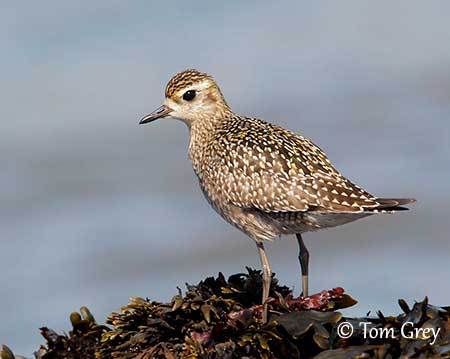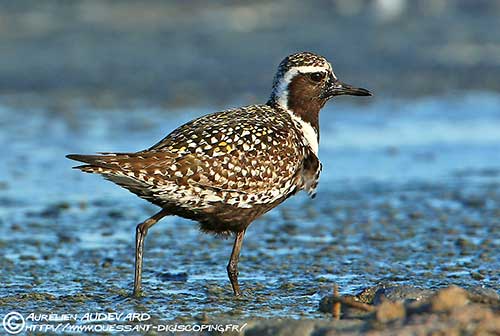
Fr: Pluvier fauve
Ang: Pacific Golden Plover
All: Tundra-Goldregenpfeifer
Esp: Chorlito Dorado Siberiano
Ita: Piviere orientale
Nd: Sibirlo
Sd: sibirisk tundrapipare
Photographers:
Aurélien Audevard
OUESSANT DIGISCOPING
Jean Michel Fenerole
Photos d’Oiseaux du monde
Tom Grey
Tom Grey's Bird Pictures & Tom Grey's Bird Pictures 2
Patrick Ingremeau
TAMANDUA
Jean Marc Rabby
Des Ailes et des Plumes
Ingo Waschkies
Bird Photography
Text by Nicole Bouglouan
Sources:
HANDBOOK OF THE BIRDS OF THE WORLD Vol 3 by Josep del Hoyo-Andrew Elliott-Jordi Sargatal - Lynx Edicions - ISBN: 8487334202
SHOREBIRDS by Peter Hayman, John Marchant and Tony Prater – Christopher Helm – 1986 – ISBN: 0747014035
GUIDE DES LIMICOLES de D. Taylor - Delachaux et Niestlé - ISBN : 2603014080
All About Birds (Cornell Lab of Ornithology)
Bird Web (Seattle Audubon Society)
Birds in backyards (Birds Australia and Australian Museum)
Department of Sustainability, Environment, Water, Population and Communities
What Bird-The ultimate Bird Guide (Mitchell Waite)
Wikipedia, the free encyclopaedia
PHYS.ORG - Plovers tracked across the Pacific
American Museum of Natural History
U.S. Fish and Wildlife Service
Pacific Golden Plover
Pluvialis fulva
Charadriiformes Order – Charadriidae Family
INTRODUCTION:
The Pacific Golden Plover was formerly regarded as the same species that the American Golden Plover until 1993. But these species have different habits and do not interbreed in W Alaska where the two forms overlap. They do not winter together. The American Golden Plover migrates to S America while the Pacific Golden Plover flies from Alaska to Pacific islands and to Australia.
The species is not globally threatened and is now protected, but despite good numbers, the population is decreasing.
DESCRIPTION OF THE BIRD:
Biometrics:
Length: 23-26 cm
Wingspan: 60-72 cm
Weight: 100-228 g
The Pacific Golden Plover adult in breeding plumage has crown, nape, back, upperwing and uppertail densely spangled with gold, black and white.
On the underparts, the black extends from face and throat down to belly and flanks. The black parts are bordered with white, and there is a black speckling along the white borders by underparts and undertail.
While the breeding plumage is developing, the bird shows gradual variations of both colour and marking, making them difficult to identify. During the moult, the black breast becomes yellowish-buff with dark speckling, but these parts darken to black as the breeding plumage is in progress.

The Pacific Golden Plover in non-breeding plumage shows yellowish-buff wash with dark speckling on the breast. On the head, there are dark patches in front of the eye, and an indistinct blackish ear patch.
Male and female are similar.
The bill is black. The eyes are dark brown. Legs and feet are greyish-black.
Bill and legs and are longer than in other Pluvialis species.
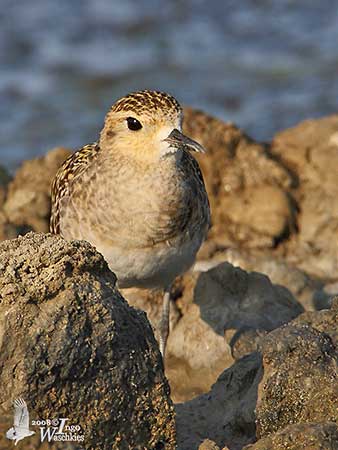
The juvenile has brownish upperparts spotted and fringed bright yellow. On the underparts, the breast is buffish with bright yellow mottling extending slightly along flanks. Central belly and undertail-coverts are whitish. We can see a conspicuous yellowish-white supercilium.
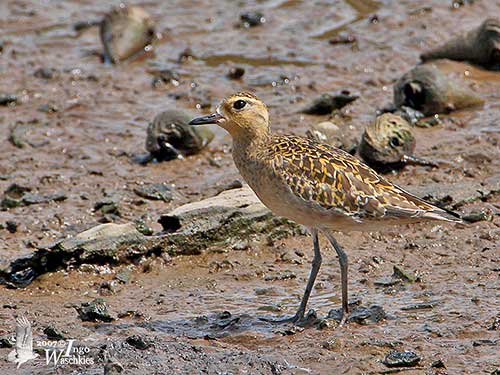
RANGE:
The Pacific Golden Plover breeds in NC and NE Russia, from Yamal Peninsula E along coast, including Wrangel Island, to Chukotskiy Peninsula, and S across Koryakskiy highlands to N Kamchatka. It also breeds in W Alaska.
It winters from E Africa through S Asia and Indonesia to Oceania, Australia and New Zealand. Small numbers are regularly reported in S California.
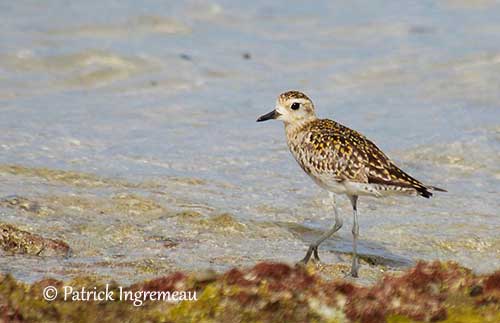
HABITAT:
The Pacific Golden Plover breeds on tundra, often on hillsides and ridges, and generally on the drier parts of the tundra. It favours the stony, drier uplands covered with mosses and lichens, and often occurs in shrubs, rarely in forest.
During migration, it frequents areas with short grass, flooded pastures, mud flats and beaches.
During winter, it can be seen in coastal areas, prairies, golf courses, ploughed fields, saltmarshes, beaches and mud flats. It roosts near or within its feeding areas.
This species is visible up to 2500 metres on passage on Hawaii.
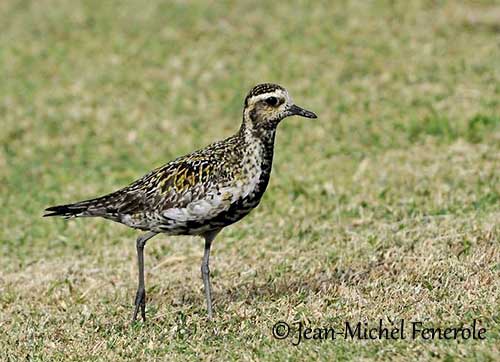
CALLS AND SONGS: SOUNDS BY XENO-CANTO
The Pacific Golden Plover utters a melodious two-note “tlu-ee” or “chu-wit” in flight, with accent on the second note.
The song is a series of slow, slurred whistles interspersed with pauses.
BEHAVIOUR IN THE WILD:
The Pacific Golden Plover feeds primarily on insects, but it also takes molluscs, worms, crustaceans and berries. During the breeding season, it feeds mainly on various insects including flies and beetles, also spiders, earthworms, slugs and freshwater crustaceans.
During winter, it feeds on various annelids, molluscs, crustaceans, insects, small fish, lizards, bird eggs and plant material including leaves and seeds.
The Pacific Golden Plover feeds by gleaning and probing in mud and in the ground. It feeds alone or in large flocks. Some individuals may defend a winter foraging area.
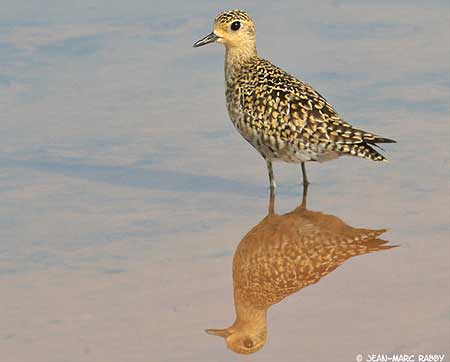
At the beginning of the breeding season, the male performs aerial displays above the breeding territory. It flies high in the air, performing exaggerated, slow, deep wingbeats. These displays are accompanied by the repeated “tlu-ee” whistles. The birds are probably monogamous for the season.
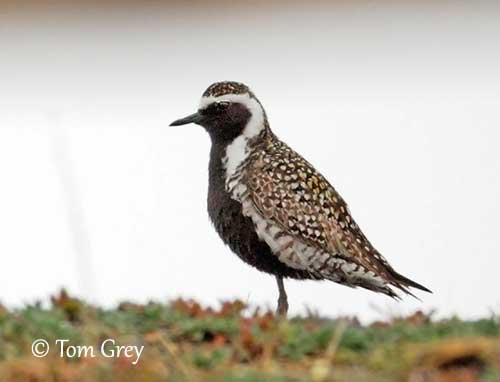
The Pacific Golden Plover is migratory and leaves the breeding grounds in late August/early September, migrating in large flocks and at night. They reach the wintering areas from September to October. They return to the Siberian tundra in early June. Some Alaskan breeders fly 4500 km non-stop across Pacific Ocean to Hawaiian Islands.
The Pacific Golden Plover performs butterfly-like aerial displays with deep wingbeats. The long, pointed wings allow a rapid flight, but energetically relatively cheap. The long-distance flights are powered by strong pectoral muscles, involving large fat stores before the migration. The usual flight is swift and direct with rapid wingbeats.
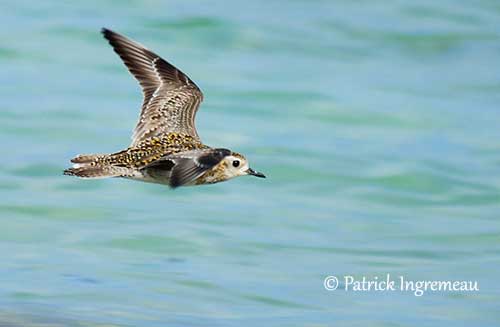
REPRODUCTION OF THIS SPECIES:
The Pacific Golden Plover breeds during the boreal summer. The egg-laying takes place between mid-May and July, depending on the range. They usually return to the same nest-site year after year.
The nest is probably built by the male on the ground. It is a shallow depression lined with leaves, grass, moss and lichens. It is placed on hummock with lichen or moss.
The female lays 4 whitish to buff eggs heavily blotched with black and brown, making them almost invisible against the tundra vegetation. Both adults incubate during 23-25 days, the male by day and the female at night.
At hatching, the downy chicks have black and yellow upperparts and white underparts. They leave the nest very soon after hatching, accompanied by both parents. They reach moist grassy tundra where the young feed themselves, tended by their parents. They are able to fly 26-28 days after hatching.
This species produces a single brood, but a replacement clutch is laid is the first is lost.
PROTECTION / THREATS / STATUS:
The Pacific Golden Plover is now protected, but it was formerly hunted during the migration in Hawaii.
The global population is estimated to number 190,000/250,000 individuals (2006). This population is suspected to be decreasing, but currently, the Pacific Golden Plover is evaluated as Least Concern.
